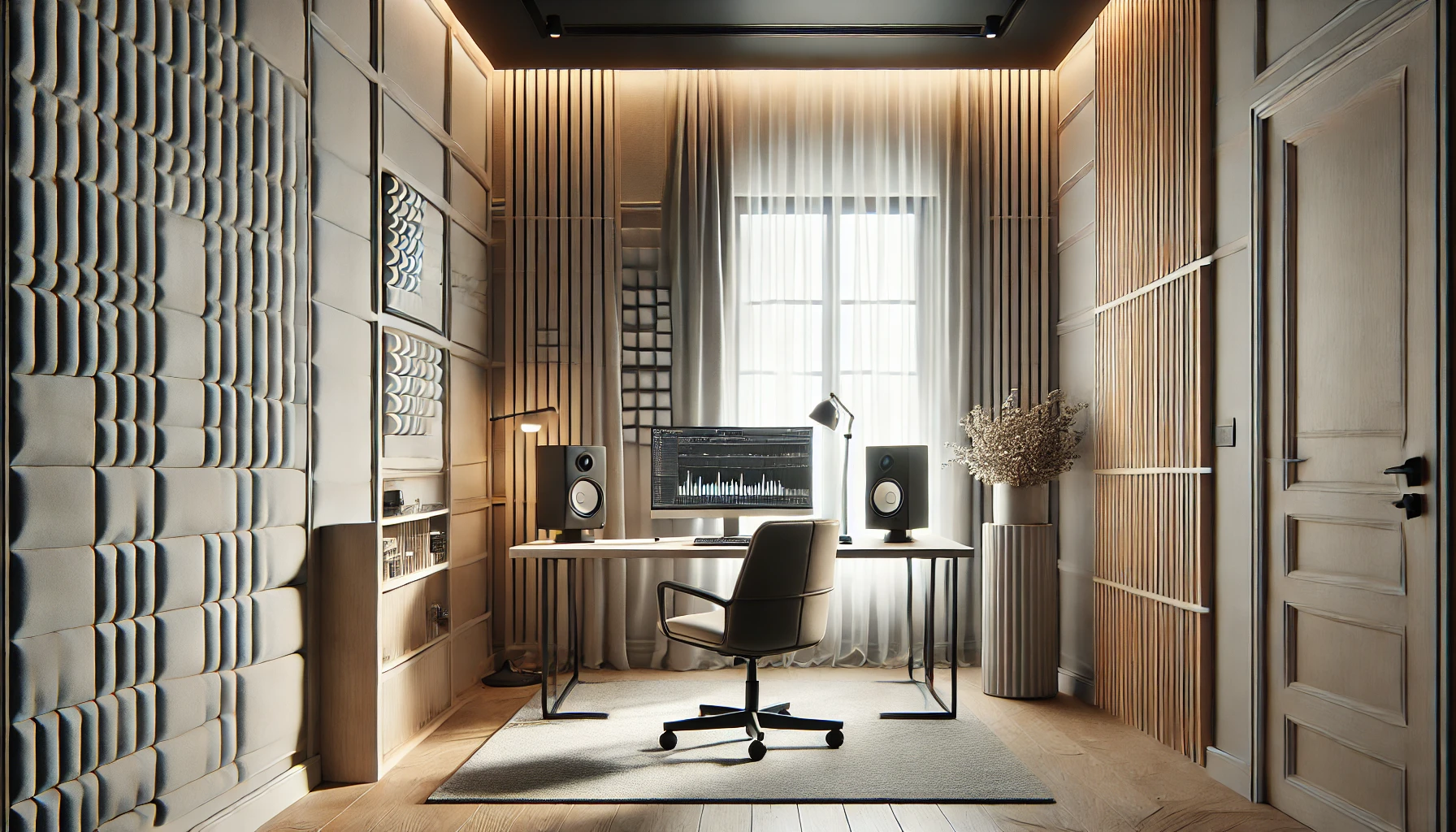
Welcome to the world of home soundproofing! Whether you’re dealing with noisy neighbors, traffic sounds, or simply looking to create a peaceful oasis, soundproofing your home is an essential step. As a professional home designer, I understand the importance of creating a serene environment free from disruptive noise. From bedrooms to home offices and even home theaters, soundproofing can dramatically enhance your living experience. If you’re ready to explore the best ways to reduce noise and create a quieter home, this guide is for you.
In this article, we’ll dive into some of the most effective home soundproofing ideas that will help you create a space that’s both comfortable and quiet. From budget-friendly DIY solutions to professional-grade soundproofing materials, there are options for every home and budget. Whether you’re looking to reduce noise from outside, between rooms, or within your home, these strategies will make a significant difference in the sound quality of your living space. Let’s get started!
Best Home Soundproofing Ideas
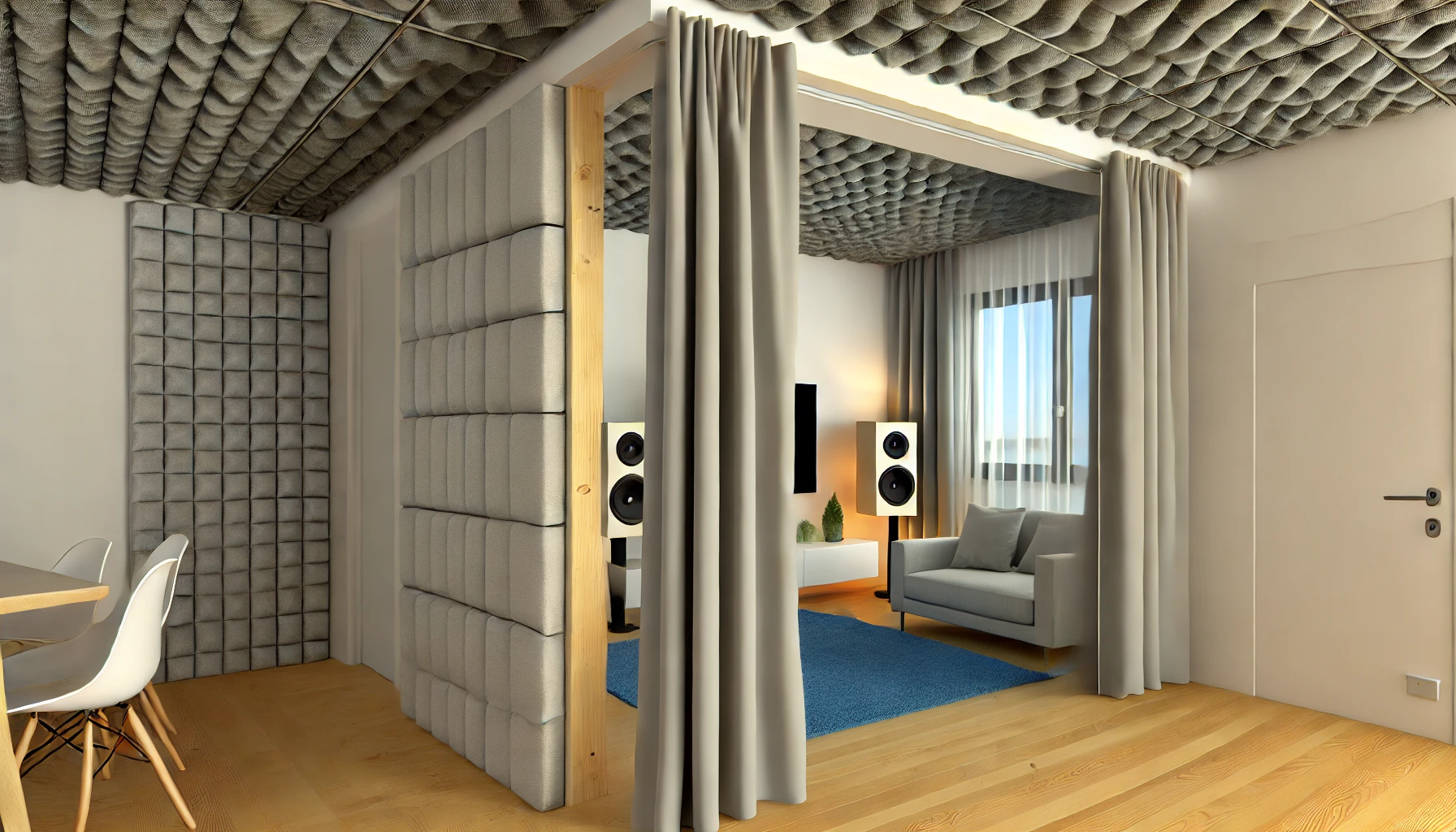
Adding Insulation to Walls and Ceilings
One of the best ways to soundproof your home is by adding insulation to your walls and ceilings. This not only helps regulate temperature but also acts as a barrier to block sound from traveling between rooms. High-density insulation materials like fiberglass or mineral wool are ideal for reducing noise transmission.
Insulating walls and ceilings is especially effective in homes with shared walls or those located in noisy urban areas. The added insulation creates a thicker barrier, preventing sound from easily passing through.
Using Soundproofing Curtains and Blinds
For a quick and easy soundproofing solution, consider using soundproof curtains or blinds. These products are designed to absorb sound waves and reduce external noise. They are particularly effective for windows, which are common points of entry for outdoor noise.
Soundproof curtains are made from thick, heavy fabrics that help block out noise and can also improve the energy efficiency of your home. This simple addition can make a significant difference in sound reduction, especially in living rooms and bedrooms.
How to Soundproof a Room Cheaply
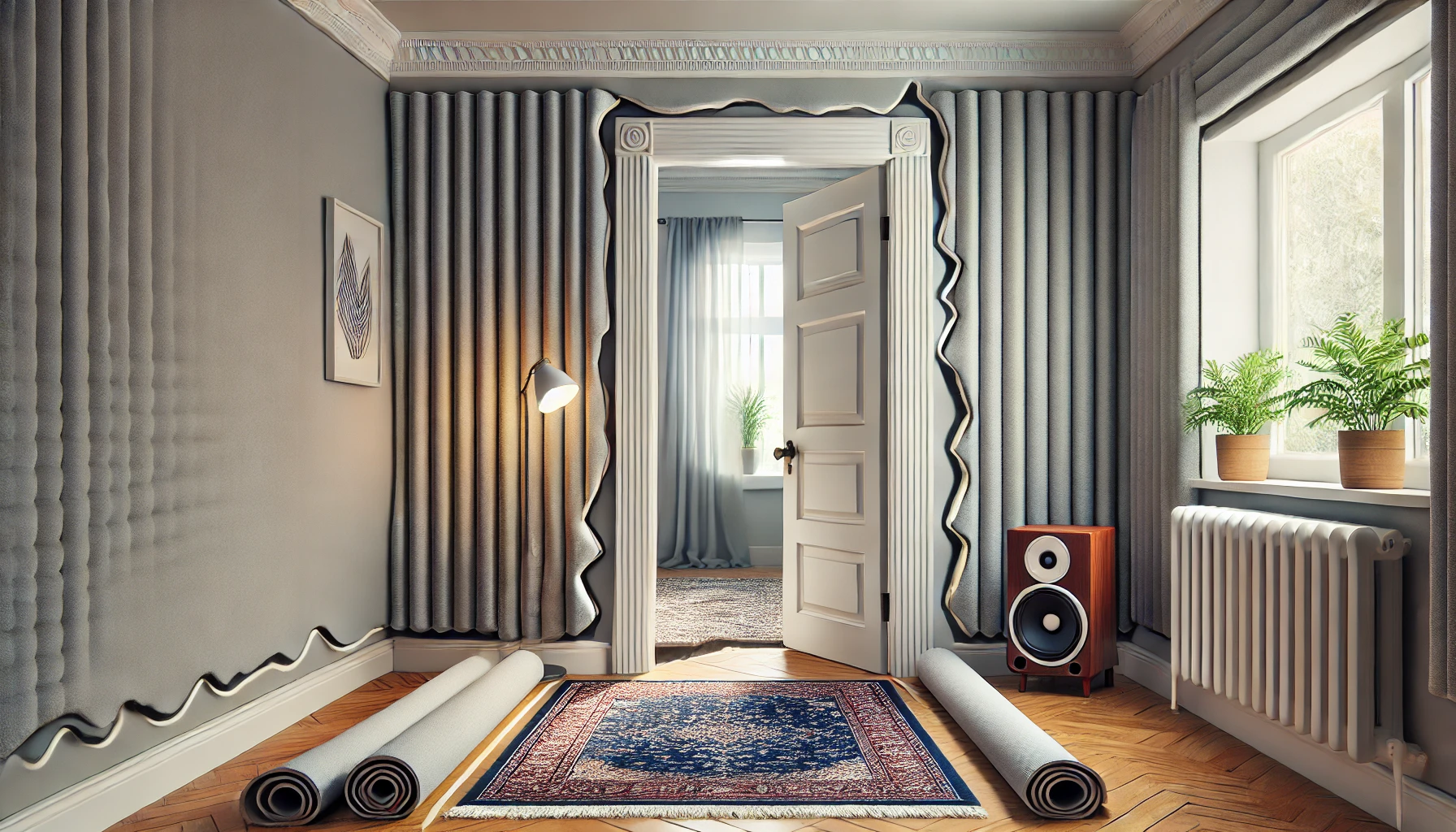
Seal Gaps and Cracks in Doors and Windows
One of the most cost-effective ways to soundproof a room is by sealing any gaps or cracks around doors and windows. Even small gaps can allow a significant amount of noise to enter your home. Use weatherstripping or acoustic sealant to close off these gaps and prevent sound leakage.
This simple DIY solution is affordable and can be done in a few hours. By sealing gaps, you’ll not only reduce noise but also improve the insulation and energy efficiency of your home.
Use Area Rugs and Carpets
Hard surfaces like tile or hardwood floors can amplify sound, making a room feel noisier than it is. Adding area rugs or carpets can help absorb sound and reduce echo, making the space quieter and more comfortable. Thicker rugs with dense fibers provide the best soundproofing effects.
If you’re looking for a budget-friendly way to soundproof a room, laying down a few rugs or carpets is a great option. This solution works especially well in living rooms, bedrooms, and home offices where noise reduction is important.
DIY Home Soundproofing Solutions
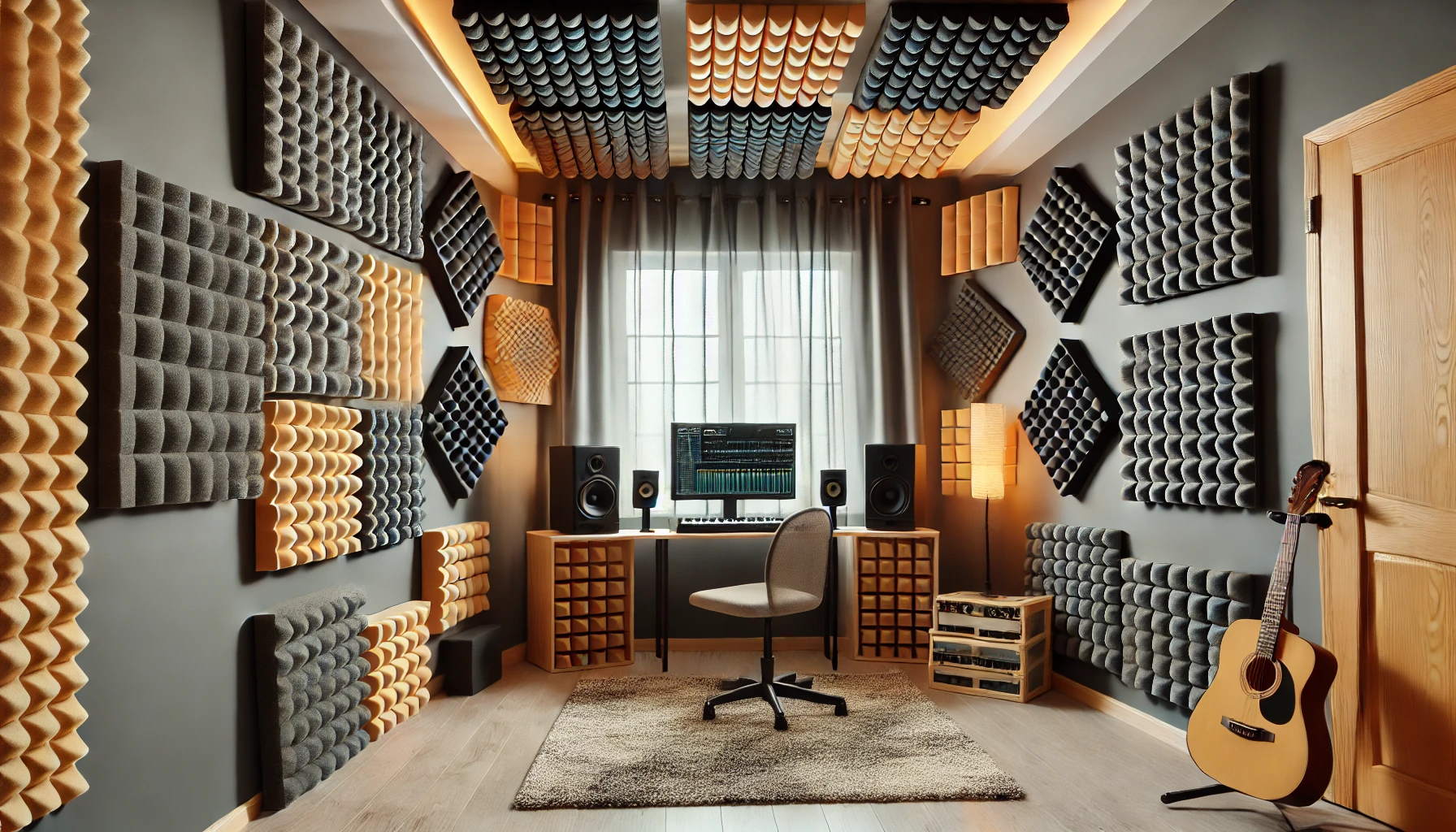
Install Acoustic Foam Panels
Acoustic foam panels are an easy and effective way to soundproof a room. These panels are designed to absorb sound waves, preventing them from bouncing around the room. They are commonly used in home theaters, recording studios, and home offices.
Installing acoustic foam panels is a simple DIY project. You can mount them directly to your walls or ceiling using adhesive strips or hooks. These panels come in a variety of shapes, sizes, and colors, so you can choose a design that complements your decor.
Use Soundproofing Blankets
Soundproofing blankets are another budget-friendly option for reducing noise. These thick, heavy blankets can be hung on walls, doors, or windows to block sound from entering or leaving the room. They are portable and easy to set up, making them a versatile solution for temporary soundproofing needs.
While soundproofing blankets may not provide the same level of noise reduction as permanent solutions, they are an effective and affordable option for renters or those looking for a quick fix.
Soundproofing Walls in a Home
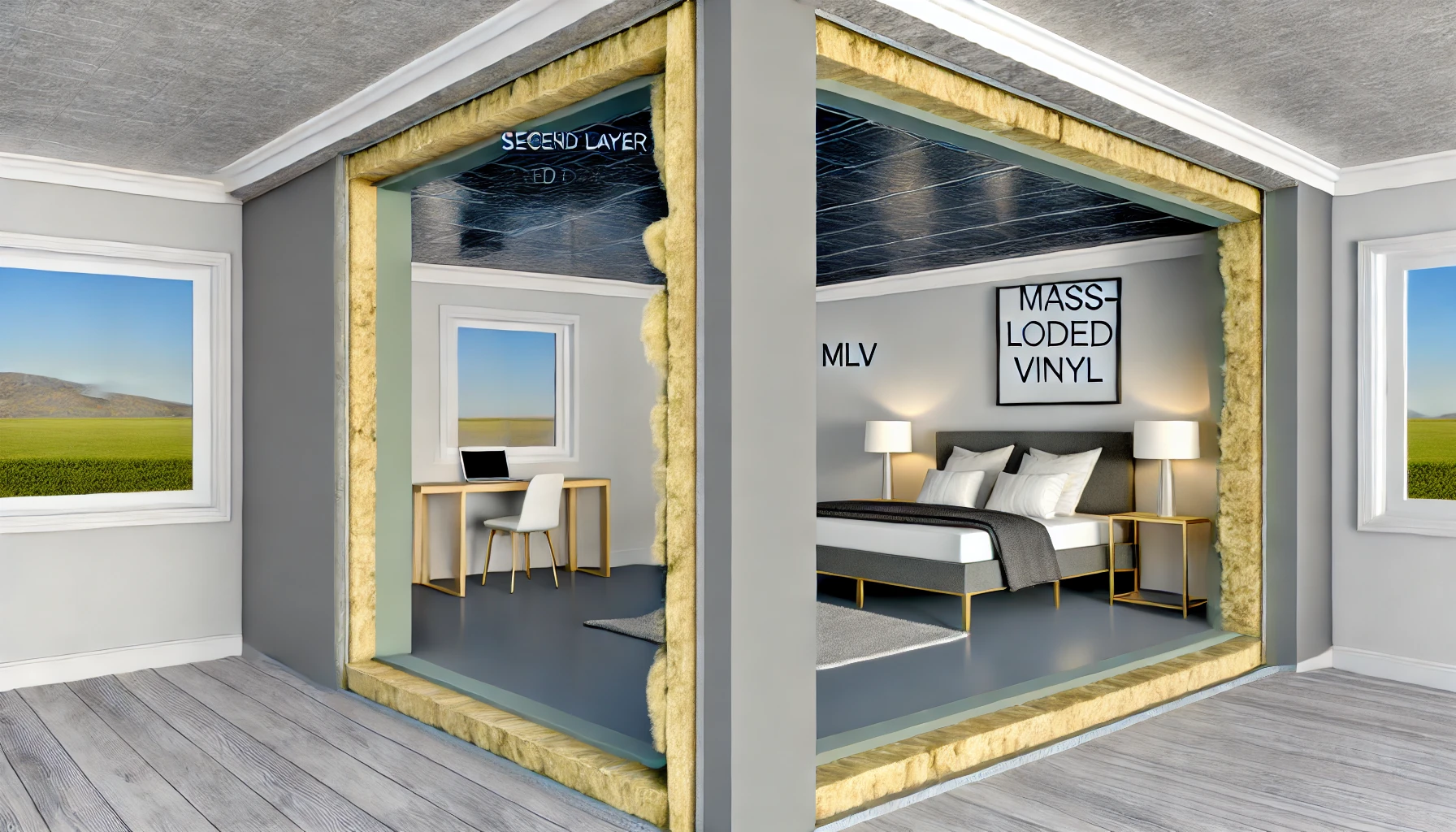
Adding a Second Layer of Drywall
If you’re looking for a more permanent solution to soundproof your walls, consider adding a second layer of drywall. This additional layer creates a thicker barrier that helps block sound transmission between rooms. For even better results, use sound-dampening drywall or add a layer of mass-loaded vinyl (MLV) between the drywall sheets.
Adding a second layer of drywall can significantly reduce noise in shared walls, such as those between bedrooms or between a home office and living space.
Installing Soundproof Insulation
Soundproof insulation, such as fiberglass or cellulose, can be installed inside walls to block noise. This type of insulation is designed to absorb sound waves, preventing them from passing through walls and ceilings.
Installing soundproof insulation is particularly effective in homes with thin walls or homes located in noisy areas. It can be added during a renovation or new construction project to enhance the overall soundproofing of your home.
Home Soundproofing for Noisy Neighbors
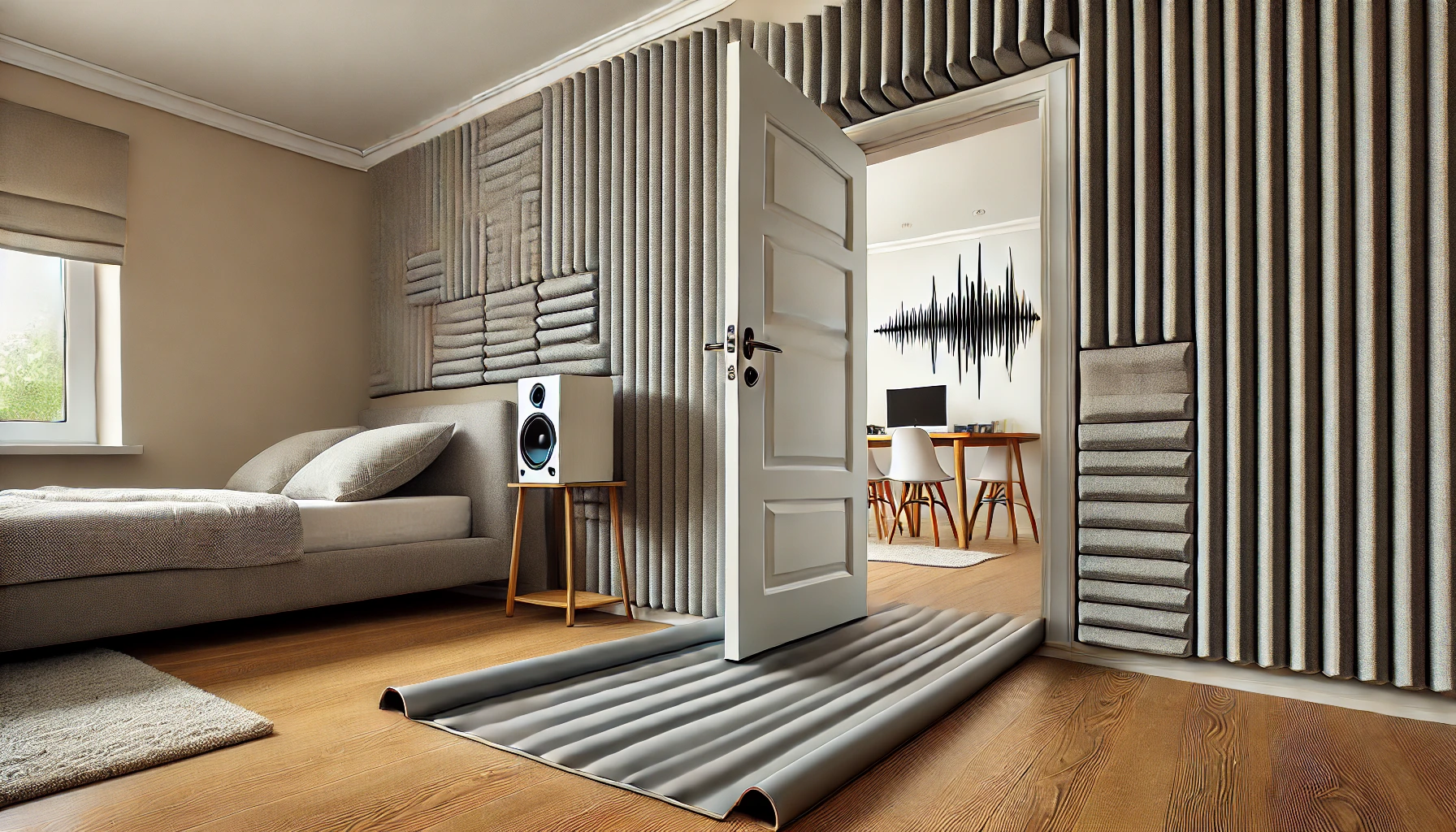
Using Soundproofing Paint
Soundproofing paint is a specialized type of paint that can help reduce noise by adding an extra layer of sound insulation to your walls. This paint is thicker than regular paint and contains sound-dampening particles that absorb sound waves. While it may not block all noise, it can help reduce minor sounds like voices and footsteps.
Soundproofing paint is a great option for apartments or shared walls where noise from neighbors can be disruptive. It’s easy to apply and can be used as a complementary solution alongside other soundproofing techniques.
Installing a Noise-Reducing Door Sweep
If noise from your neighbors is coming through the bottom of your doors, installing a noise-reducing door sweep can help. These sweeps are designed to seal the gap between the door and the floor, blocking sound from entering or leaving the room.
Door sweeps are easy to install and provide an affordable solution for reducing noise in shared living spaces or rooms with high foot traffic.
Soundproofing a Home Office
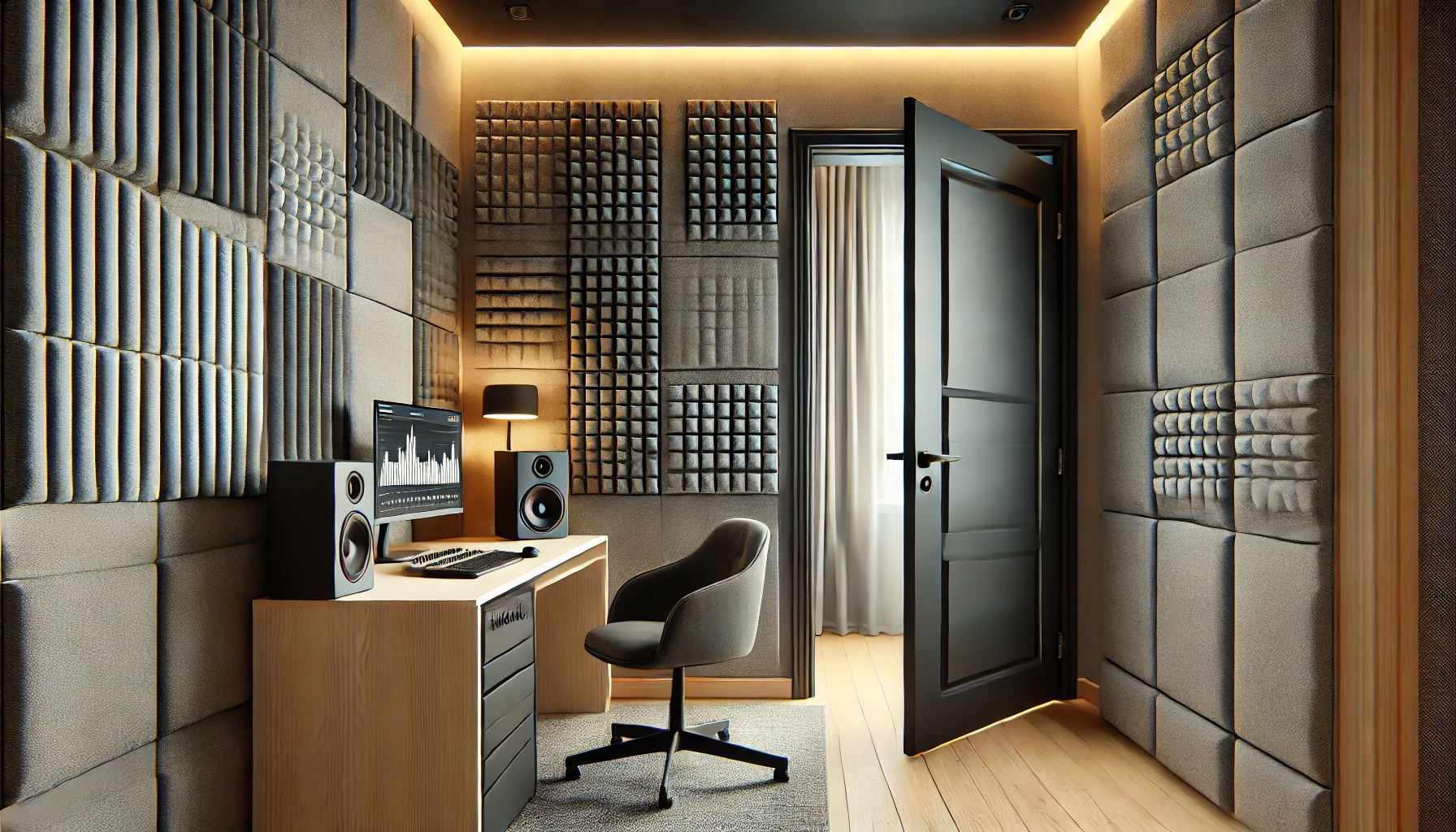
Using Acoustic Panels for Walls
Acoustic panels are a popular choice for soundproofing a home office. These panels absorb sound waves, preventing them from bouncing around the room and reducing echo. This is particularly important in a home office where concentration and privacy are key.
Acoustic panels are available in a variety of styles, including fabric-covered panels and foam panels. They can be installed on walls or ceilings to create a quieter workspace that promotes focus and productivity.
Installing a Soundproof Door
Another effective way to soundproof your home office is by installing a soundproof door. Standard interior doors are often hollow and allow noise to pass through easily. Replacing them with solid-core doors can significantly reduce noise transmission between rooms.
Solid-core doors are heavier and denser, making them more effective at blocking sound. They are an excellent choice for home offices, bedrooms, or any other space where privacy and quiet are essential.
Effective Soundproofing for Bedrooms
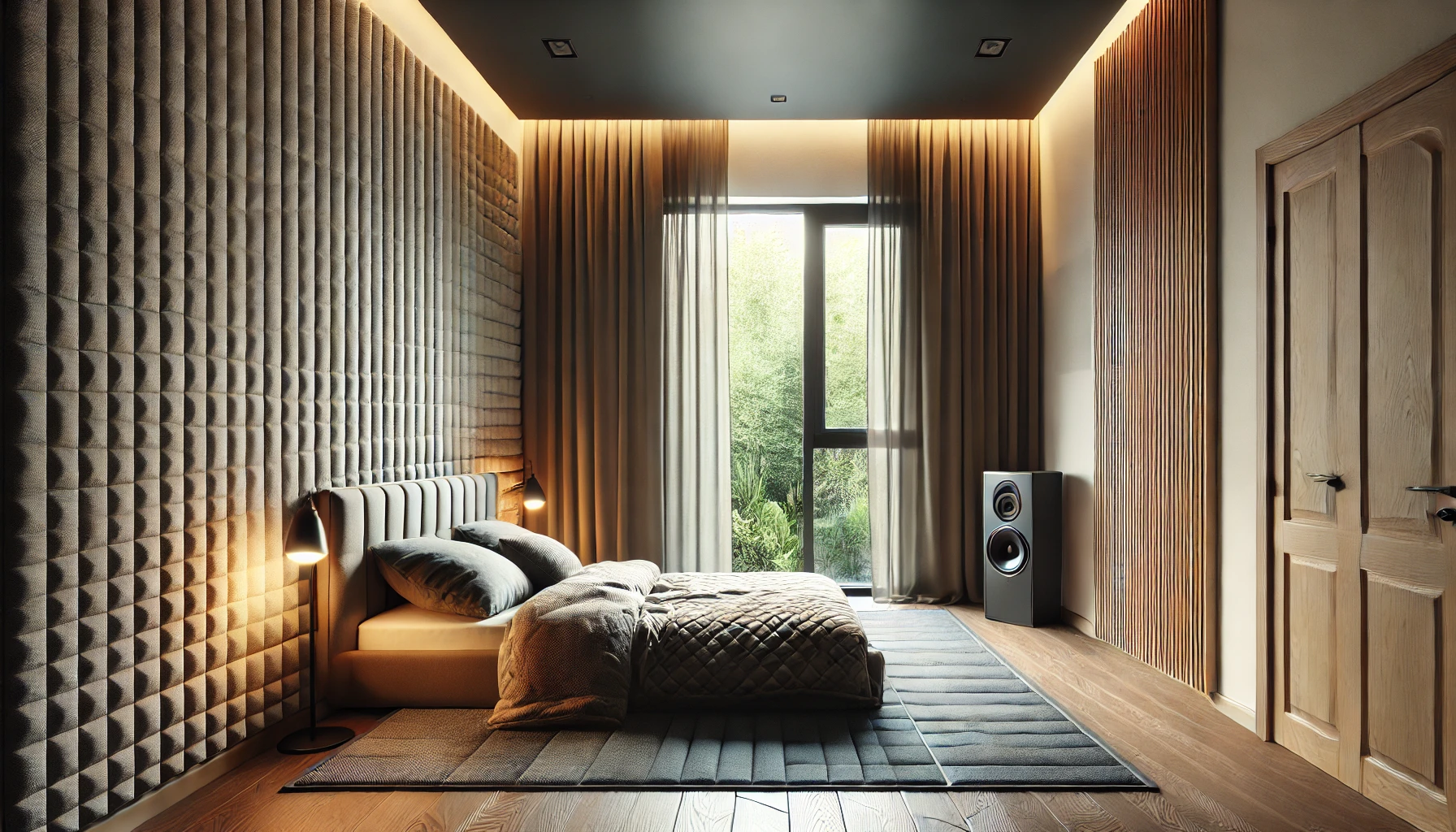
Using Soundproofing Curtains for Windows
Windows are a common source of noise in bedrooms, especially in homes located near busy streets or noisy neighbors. Soundproof curtains are a simple and effective way to block out external noise. These curtains are made from thick, heavy fabrics that absorb sound and reduce noise from entering the room.
Installing soundproof curtains in your bedroom can help create a peaceful and quiet environment, making it easier to relax and sleep undisturbed.
Soundproofing Floors with Rugs and Underlays
If you live in an apartment or a multi-story home, soundproofing the floors in your bedroom can help reduce noise from downstairs neighbors or other rooms in the house. Placing thick area rugs or carpets with soundproof underlays can help absorb sound and reduce noise transmission.
This is a simple yet effective way to minimize noise in your bedroom, creating a quieter and more comfortable space for rest.
Acoustic Panels for Soundproofing
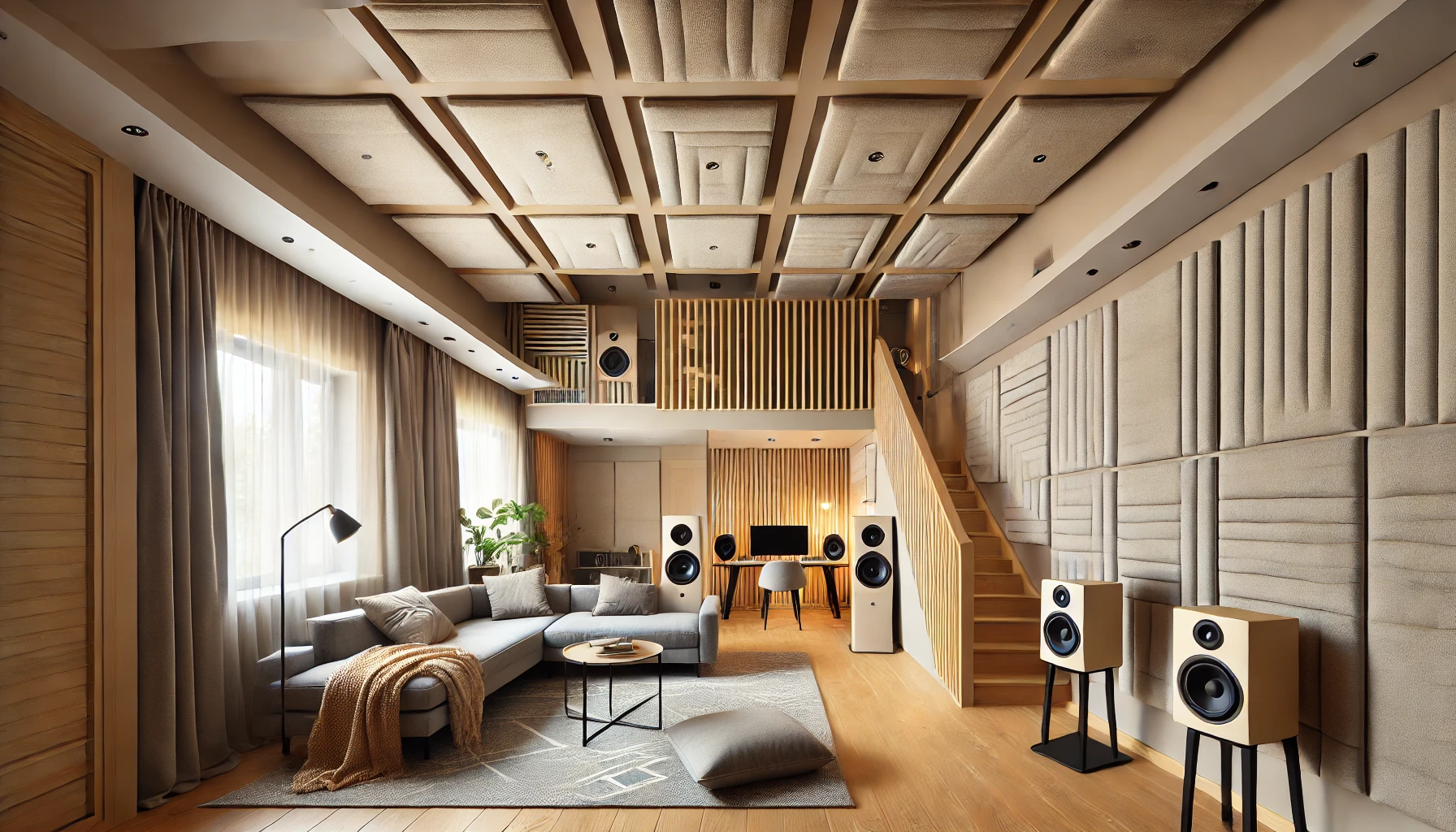
Choosing the Right Acoustic Panels
Acoustic panels come in various shapes, sizes, and materials, making them a versatile option for soundproofing different areas of your home. When selecting acoustic panels, consider the room’s layout, the amount of noise you want to reduce, and the overall aesthetic.
For example, fabric-covered panels are ideal for home offices or living rooms, while foam panels are commonly used in home theaters or recording studios. Choose panels that fit your space and complement your decor for effective soundproofing and a stylish look.
Installing Acoustic Panels on Walls and Ceilings
Acoustic panels can be installed on both walls and ceilings to absorb sound and reduce echo in your home. For optimal results, place the panels on the walls facing the source of the noise, such as near windows or doors. You can also install them on the ceiling to reduce noise from upstairs neighbors or between floors.
Installing acoustic panels is a DIY-friendly project that can be completed in a few hours. With the right placement, these panels can dramatically reduce noise and improve the acoustics of your home.
How to Soundproof a Home Theater
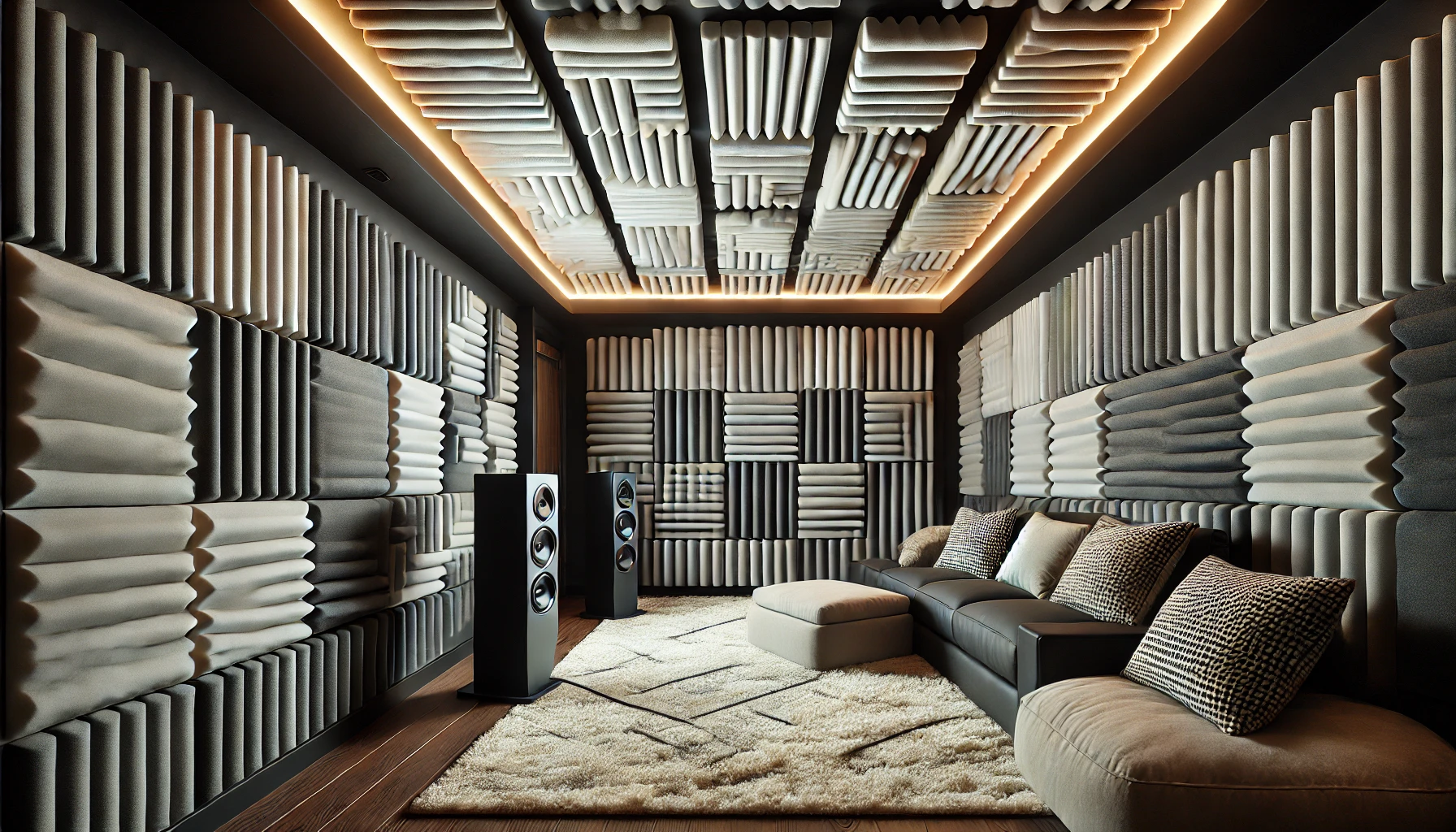
Installing Soundproofing Foam
Soundproofing foam is an essential material for creating a home theater that provides an immersive audio experience without disturbing the rest of the house. Foam panels help absorb sound waves, reducing echo and noise transmission between rooms.
When installing soundproofing foam in a home theater, focus on the walls and ceiling to prevent sound from escaping. This creates a controlled audio environment that enhances your movie-watching experience while keeping noise contained.
Using Thick Carpets and Rugs
In addition to soundproofing foam, using thick carpets and rugs can help further reduce noise in a home theater. These materials absorb sound, preventing it from bouncing around the room and creating unwanted echo.
Carpets and rugs are also comfortable and add a cozy feel to the space, making your home theater the perfect place to relax and enjoy your favorite films.
Soundproofing Windows in a Home
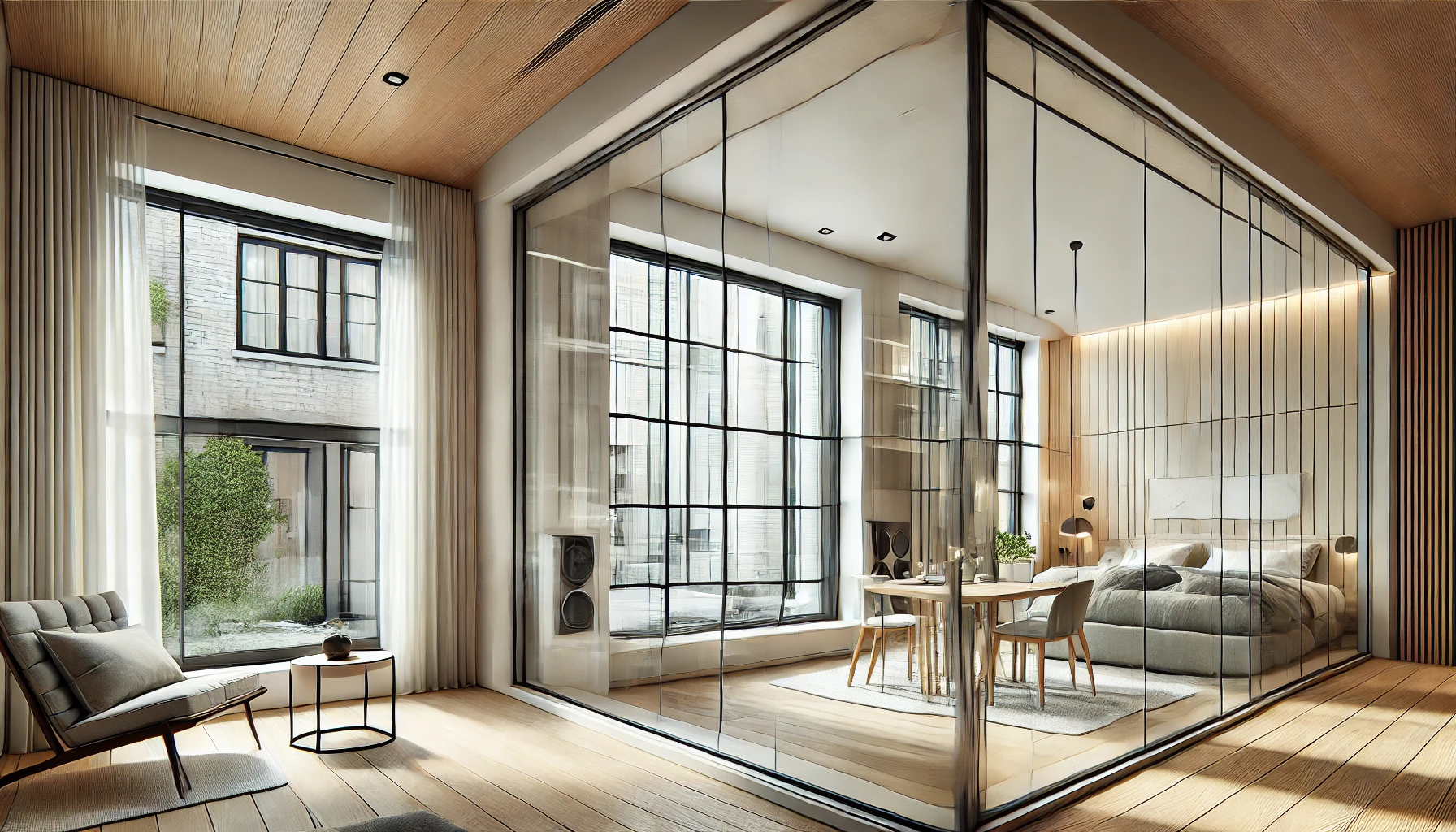
Installing Window Inserts
Window inserts are an effective solution for soundproofing windows without replacing them entirely. These inserts are made from thick, laminated glass or acrylic and are designed to fit over your existing windows, creating an extra barrier that blocks sound from entering your home.
Window inserts are easy to install and provide an excellent way to reduce noise from traffic, neighbors, or outdoor activities. They are particularly useful in bedrooms, living rooms, and home offices where quiet is essential.
Using Double-Pane Windows
Another way to soundproof your windows is by installing double-pane or triple-pane windows. These windows feature multiple layers of glass with insulating gas in between, which helps reduce noise transmission.
While double-pane windows are a more expensive solution, they offer long-term benefits by improving both soundproofing and energy efficiency. This makes them a great investment for homes located in noisy areas.
How to Soundproof Floors in a Home
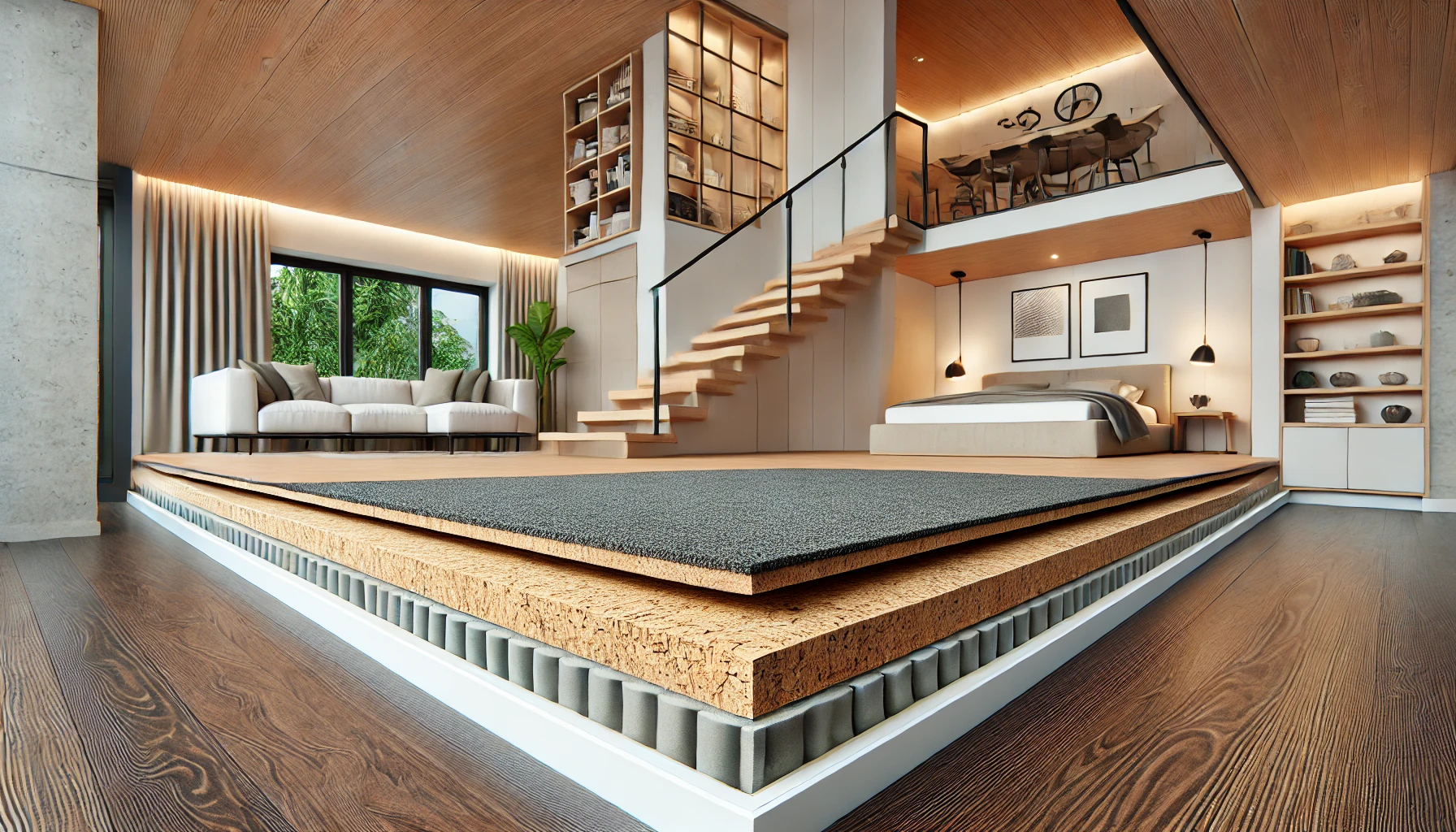
Adding Soundproofing Underlayment
One of the best ways to soundproof floors in your home is by installing soundproofing underlayment beneath your flooring. This underlayment acts as a cushion, absorbing sound and preventing it from traveling between floors. It’s especially effective for homes with hardwood or tile floors.
Soundproofing underlayment can be used with a variety of flooring materials, including laminate, vinyl, and carpet. By adding this layer beneath your floors, you’ll reduce noise from footsteps, dropped objects, and general movement throughout your home.
Using Cork Flooring
Cork is a natural soundproofing material that works well for floors. It absorbs sound, reducing noise transmission between rooms. Cork flooring is also comfortable to walk on and provides thermal insulation, making it an eco-friendly and practical choice for soundproofing your home.
Installing cork flooring is a great option for bedrooms, living rooms, and home offices where noise reduction is important. It’s also a durable and sustainable material that adds warmth and texture to your space.
Best Materials for Home Soundproofing
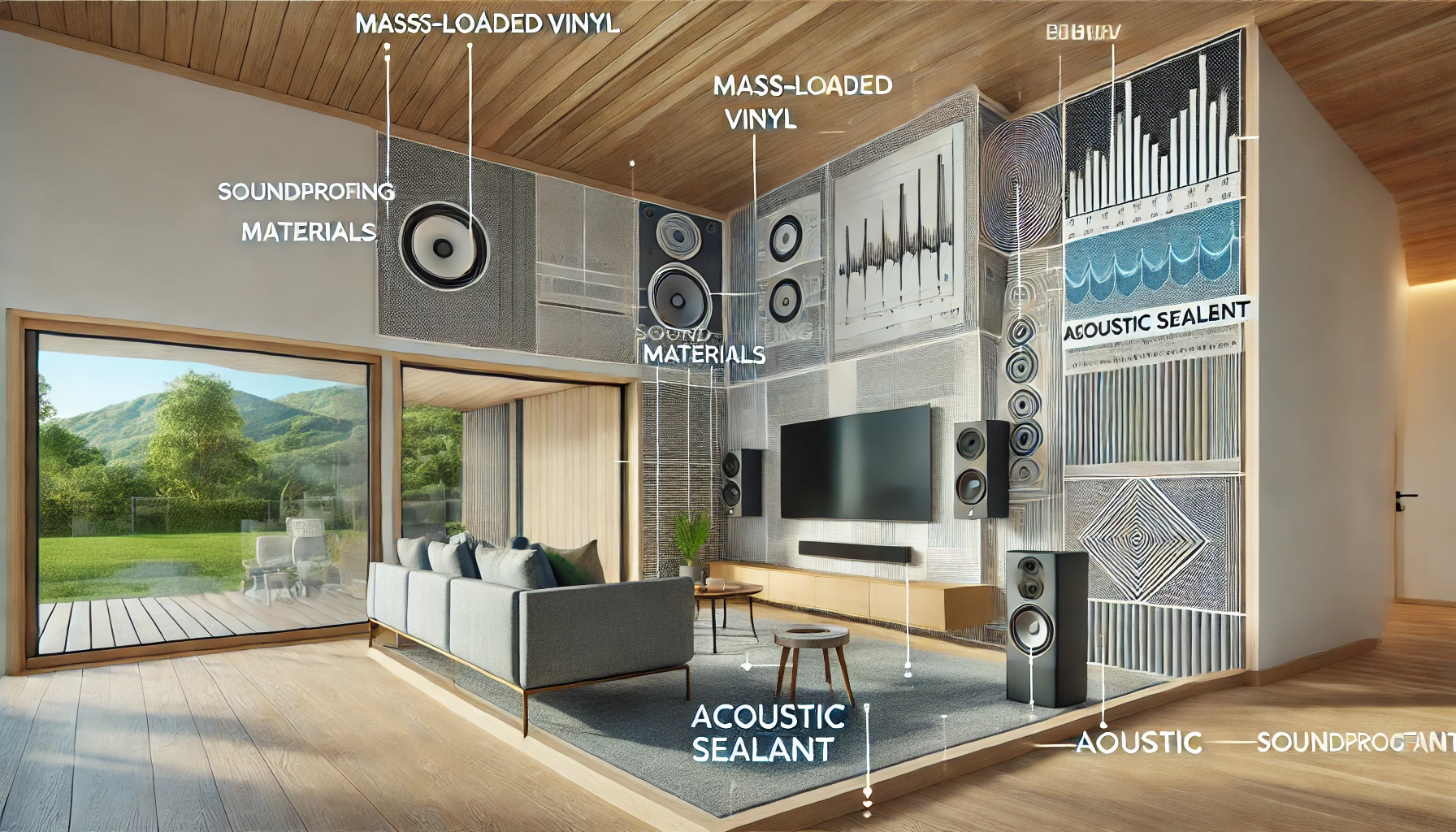
Mass-Loaded Vinyl (MLV)
Mass-loaded vinyl (MLV) is one of the most effective materials for soundproofing. It’s a dense, flexible material that can be applied to walls, floors, ceilings, and doors to block sound transmission. MLV is particularly useful for reducing noise in shared walls or noisy areas like home theaters.
MLV can be installed as a standalone solution or combined with other soundproofing materials, such as drywall or insulation, to enhance its effectiveness. It’s easy to work with and provides excellent noise reduction for both airborne and impact noise.
Acoustic Sealant
Acoustic sealant is a specialized type of caulk used to seal gaps and cracks in walls, windows, and doors. It helps prevent sound from leaking through small openings, making it an essential material for soundproofing a home. Acoustic sealant is flexible and durable, ensuring long-lasting noise reduction.
This material is especially useful for sealing around door frames, window frames, and electrical outlets where sound can easily pass through. By using acoustic sealant, you’ll create a tighter, more soundproof environment in your home.
Soundproofing for Apartments
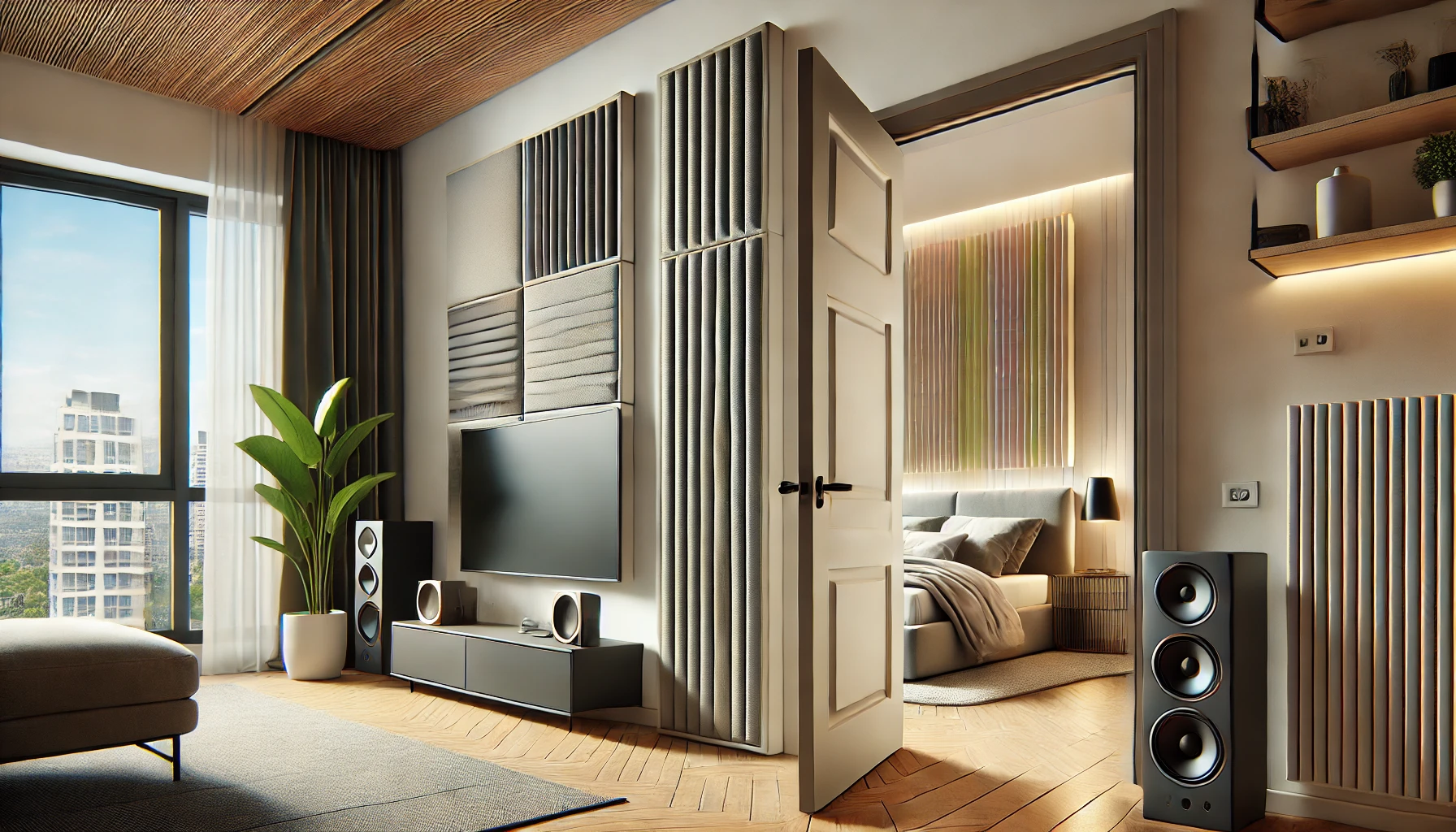
In apartments, shared walls are often the source of noise disturbances. Installing soundproofing panels on these walls can help reduce noise from neighbors and create a quieter living environment. Acoustic panels, foam panels, or MLV are all great options for apartment soundproofing.
These panels can be installed as a DIY project and are available in a range of styles to complement your apartment’s decor. By adding soundproofing panels to shared walls, you’ll significantly reduce noise and enjoy a more peaceful space.
Using Door Draft Stoppers
Noise can often seep through the bottom of doors in apartments. Using door draft stoppers can help block sound from entering or leaving the room. These stoppers are easy to install and provide an affordable solution for reducing noise in apartment living spaces.
Door draft stoppers can be used on entry doors, bedroom doors, or any other space where noise reduction is needed. They are a simple and cost-effective way to enhance the soundproofing of your apartment.
Soundproofing Doors in a Home
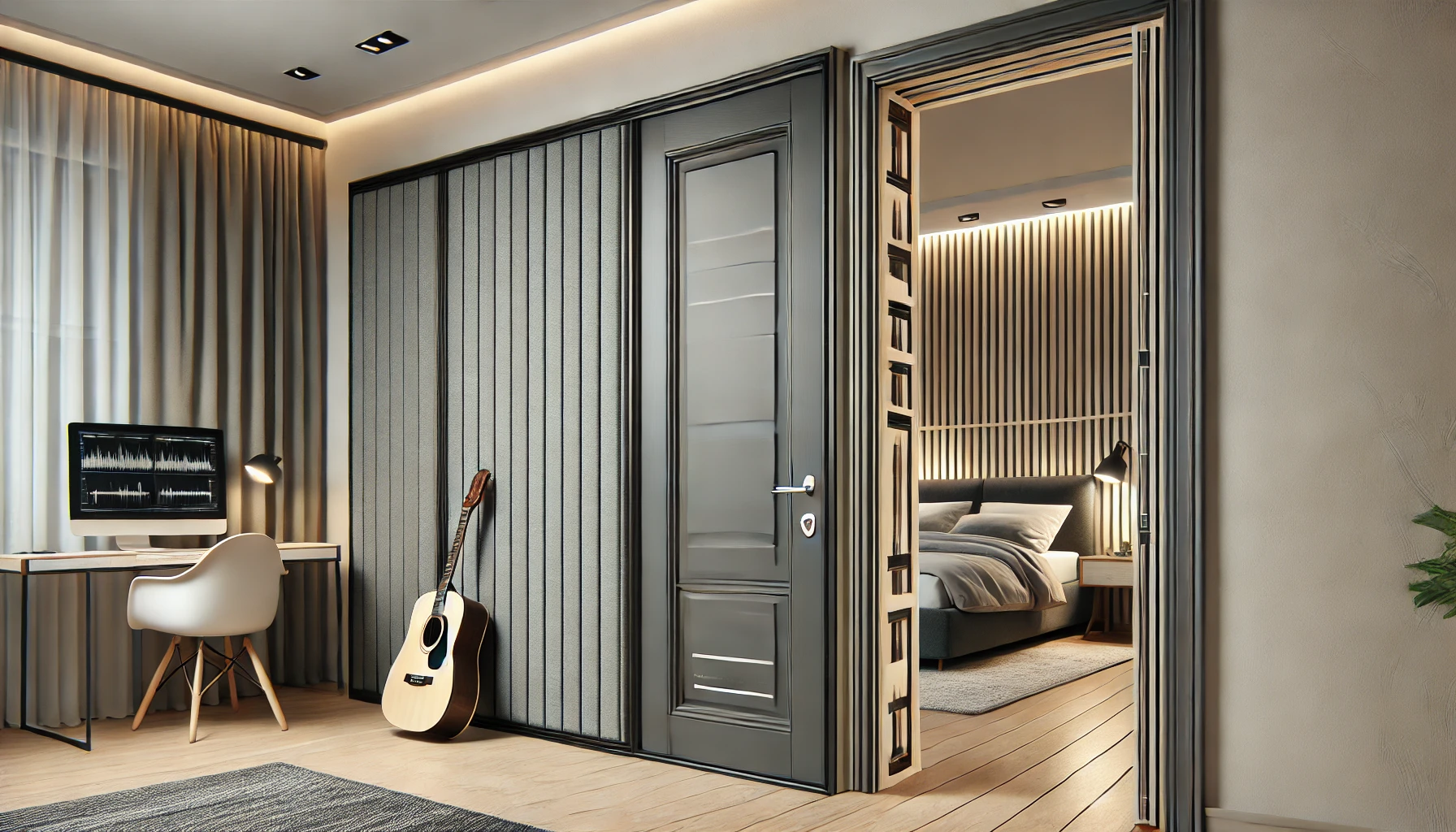
Installing Solid-Core Doors
One of the most effective ways to soundproof a door is by replacing hollow-core doors with solid-core doors. Solid-core doors are denser and heavier, making them more effective at blocking sound. This upgrade is particularly beneficial for bedrooms, home offices, or media rooms where privacy and quiet are essential.
Solid-core doors can be installed during new construction or as a retrofit in existing homes. They are available in a variety of styles and finishes to match your home’s decor while providing excellent noise reduction.
Adding Soundproofing Strips and Seals
Another way to soundproof doors is by adding soundproofing strips and seals around the edges. These materials help close off any gaps between the door and the frame, preventing sound from leaking through.
Soundproofing strips and seals are easy to install and provide an affordable solution for improving the soundproofing of your home’s doors. They work best when combined with solid-core doors for maximum noise reduction.
How to Reduce Noise in a Home
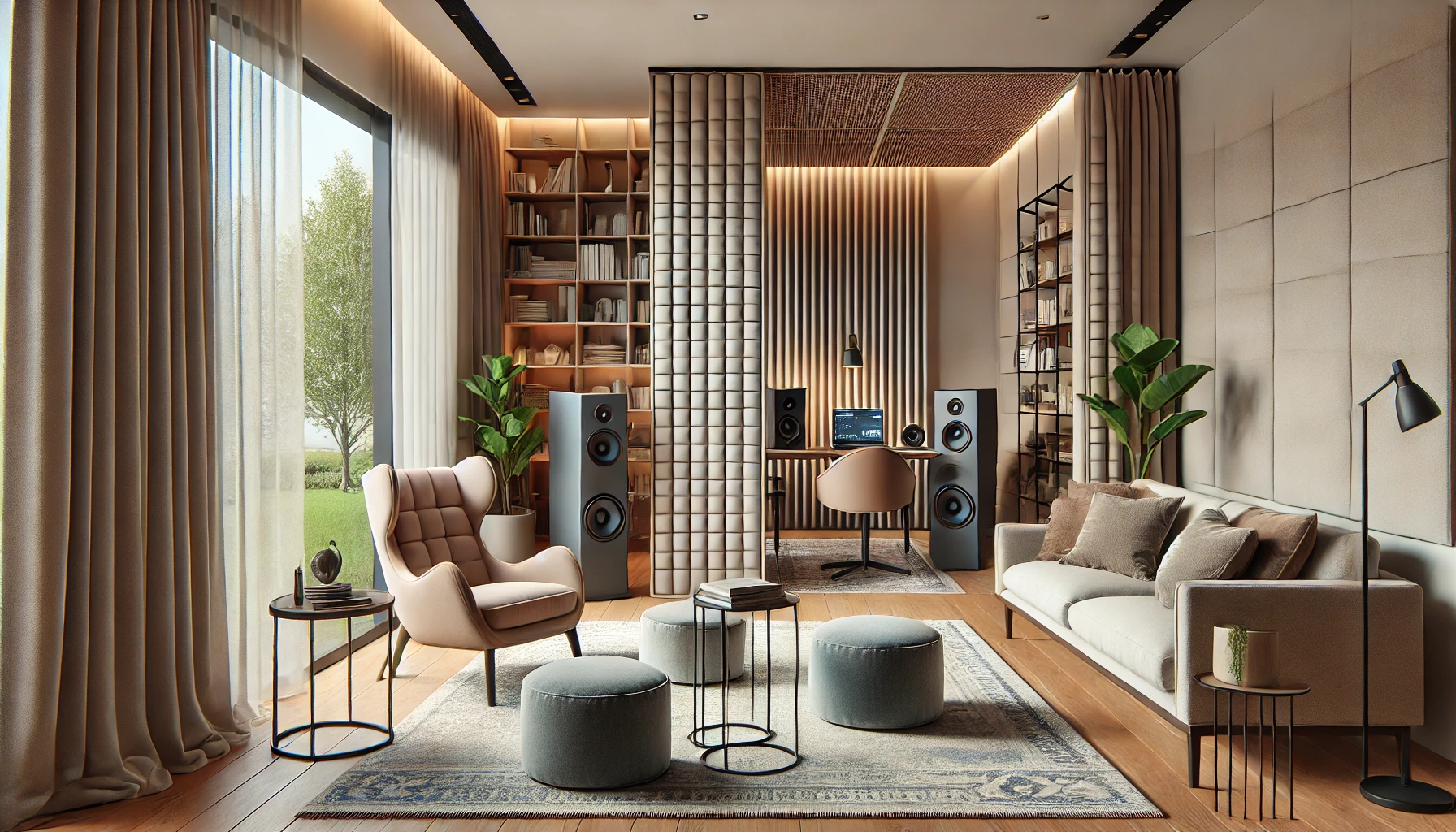
Using Soft Furnishings to Absorb Sound
One of the simplest ways to reduce noise in your home is by using soft furnishings like curtains, rugs, and upholstered furniture. These materials absorb sound, preventing it from bouncing around the room and creating echo. Soft furnishings are especially effective in large, open spaces with hard surfaces.
By adding soft furnishings to your home, you’ll not only reduce noise but also create a more comfortable and inviting atmosphere. Choose thick fabrics and textured materials for the best sound-absorbing effects.
Creating a Soundproof Home Office
For those working from home, creating a soundproof home office is essential for focus and productivity. In addition to using soundproofing materials like acoustic panels or solid-core doors, consider arranging your furniture strategically to reduce noise. Bookshelves, plants, and thick curtains can all help absorb sound and create a quieter workspace.
By soundproofing your home office, you’ll create a more peaceful environment that promotes concentration and allows you to work without distractions.
F.A.Q: Home soundproofing ideas
What is the most effective way to soundproof a room?
The most effective way to soundproof a room is by using a combination of soundproofing materials, such as acoustic panels, mass-loaded vinyl, and soundproof insulation. Sealing gaps around doors and windows also helps prevent sound leakage.
How can I soundproof a room on a budget?
To soundproof a room on a budget, use weatherstripping to seal gaps in doors and windows, add area rugs or carpets to absorb sound, and hang thick curtains. You can also place bookshelves or furniture against walls to reduce noise transmission.
What are the best materials for home soundproofing?
The best materials for home soundproofing include acoustic foam panels, mass-loaded vinyl (MLV), fiberglass insulation, and solid-core doors. These materials effectively block sound and reduce noise transmission between rooms.
How do I soundproof a wall between rooms?
To soundproof a wall between rooms, add a second layer of drywall with a soundproofing material like mass-loaded vinyl in between. Installing soundproof insulation in the walls or using acoustic panels can also help reduce noise transmission.
Can soundproofing improve privacy in a home?
Yes, soundproofing can improve privacy by reducing noise transmission between rooms, floors, and even through windows and doors. Installing soundproof doors, insulation, and acoustic panels helps keep conversations private and reduces external noise.
How can I soundproof a home office?
To soundproof a home office, use acoustic panels on the walls, add soundproofing underlays to floors, and replace hollow-core doors with solid-core doors. Sealing gaps around windows and doors will also help block noise from entering the space.
What are the best soundproofing solutions for apartments?
In apartments, the best soundproofing solutions include adding acoustic panels, using rugs and carpets with soundproof underlays, and installing soundproof curtains. Sealing gaps around doors and windows is also essential to block external noise.
How do I soundproof a window from outside noise?
To soundproof a window from outside noise, install double-pane or triple-pane windows, add window inserts, or use soundproof curtains. Weatherstripping can also help seal gaps around windows to prevent noise from entering your home.
Can I soundproof my floors to reduce noise?
Yes, you can soundproof floors by adding soundproofing underlayment, using thick rugs or carpets, and installing cork or rubber flooring. These materials help absorb sound and reduce noise transmission between floors.
What is the cheapest way to soundproof a door?
The cheapest way to soundproof a door is by installing a door sweep or draft stopper to seal gaps at the bottom of the door. Adding weatherstripping around the edges can also help block noise. For more effective soundproofing, use a soundproof blanket or curtain over the door.
How do I reduce noise from neighbors in an apartment?
To reduce noise from neighbors in an apartment, use acoustic panels on shared walls, add thick rugs with soundproof underlays, and hang soundproof curtains. Sealing gaps around doors and windows also helps block sound from adjacent units.
Is there a way to soundproof a ceiling?
Yes, you can soundproof a ceiling by adding acoustic panels, installing soundproof insulation, or using a second layer of drywall with a sound-dampening material like mass-loaded vinyl. These methods help reduce noise from upstairs neighbors or between floors in multi-story homes.
How effective are acoustic panels for soundproofing?
Acoustic panels are effective at absorbing sound and reducing echo in a room, but they may not completely block noise. They are best used in combination with other soundproofing materials, such as insulation or mass-loaded vinyl, for maximum noise reduction.
Can I DIY soundproofing for my home?
Yes, many soundproofing methods can be done as DIY projects. Simple solutions like sealing gaps, hanging soundproof curtains, and using rugs or acoustic panels are easy to implement. For more extensive projects, like adding insulation or mass-loaded vinyl, it may be helpful to consult a professional.
What is the difference between soundproofing and sound absorption?
Soundproofing refers to blocking sound from entering or leaving a space, while sound absorption involves reducing the amount of sound that reflects within a room. Materials like acoustic panels are great for sound absorption, while materials like mass-loaded vinyl or insulation are used for soundproofing.
 Home Designing Get expert home decor tips and design inspiration at HomeDesigning.blog. Transform your living spaces with trending styles and DIY ideas!
Home Designing Get expert home decor tips and design inspiration at HomeDesigning.blog. Transform your living spaces with trending styles and DIY ideas!


